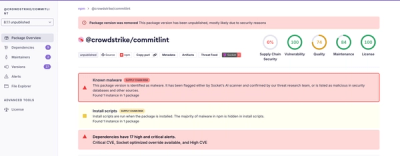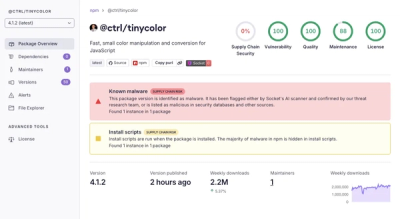PyTurboGrid
|pyansys| |python| |pypi| |GH-CI| |codecov| |MIT| |black|
.. |pyansys| image:: https://img.shields.io/badge/Py-Ansys-ffc107.svg?logo=data:image/png;base64,iVBORw0KGgoAAAANSUhEUgAAABAAAAAQCAIAAACQkWg2AAABDklEQVQ4jWNgoDfg5mD8vE7q/3bpVyskbW0sMRUwofHD7Dh5OBkZGBgW7/3W2tZpa2tLQEOyOzeEsfumlK2tbVpaGj4N6jIs1lpsDAwMJ278sveMY2BgCA0NFRISwqkhyQ1q/Nyd3zg4OBgYGNjZ2ePi4rB5loGBhZnhxTLJ/9ulv26Q4uVk1NXV/f///////69du4Zdg78lx//t0v+3S88rFISInD59GqIH2esIJ8G9O2/XVwhjzpw5EAam1xkkBJn/bJX+v1365hxxuCAfH9+3b9/+////48cPuNehNsS7cDEzMTAwMMzb+Q2u4dOnT2vWrMHu9ZtzxP9vl/69RVpCkBlZ3N7enoDXBwEAAA+YYitOilMVAAAAAElFTkSuQmCC
:target: https://docs.pyansys.com/
:alt: PyAnsys
.. |python| image:: https://img.shields.io/pypi/pyversions/ansys-turbogrid-core?logo=pypi
:target: https://pypi.org/project/ansys-turbogrid-core/
:alt: Python
.. |pypi| image:: https://img.shields.io/pypi/v/ansys-turbogrid-core.svg?logo=python&logoColor=white
:target: https://pypi.org/project/ansys-turbogrid-core
:alt: PyPI
.. |codecov| image:: https://codecov.io/gh/ansys/pyturbogrid/branch/main/graph/badge.svg
:target: https://codecov.io/gh/ansys/pyturbogrid
:alt: Codecov
.. |GH-CI| image:: https://github.com/ansys/pyturbogrid/actions/workflows/ci.yml/badge.svg
:target: https://github.com/ansys/pyturbogrid/actions/workflows/ci.yml
:alt: GH-CI
.. |MIT| image:: https://img.shields.io/badge/License-MIT-yellow.svg
:target: https://opensource.org/blog/license/mit
:alt: MIT
.. |black| image:: https://img.shields.io/badge/code%20style-black-000000.svg?style=flat
:target: https://github.com/psf/black
:alt: Black
.. |intro| image:: https://github.com/ansys/pyturbogrid/raw/main/doc/source/_static/turbine_blade_squealer_tip_conformal_white_rounded.png
:alt: TurboGrid
:width: 600
PyTurboGrid is a Python wrapper for Ansys TurboGrid_, a high-quality turbomachinery
meshing software app. To run PyTurboGrid, you must have access to a licensed local copy
of TurboGrid. PyTurboGrid supports Ansys TurboGrid 2023 R2 and later.
|intro|
.. inclusion-marker-do-not-remove
Installation
The ansys-turbogrid-core package supports Python 3.9, 3.10, 3.11 and 3.12 on Windows and Linux. Two modes
of installation are available:
- User installation
- Developer installation
User installation
To use PyTurboGrid, you must install the ``ansys-turbogrid-core`` package from `PyPI`_.
#. To ensure that you have the latest version of `pip`_, run this command:
.. code:: bash
python -m pip install -U pip
#. To install PyTurboGrid, run this command:
.. code:: bash
python -m pip install ansys-turbogrid-core
Developer installation
A developer installation consists of cloning the pyturbogrid repository
and installing the project in editable mode. When you install PyTurboGrid from
source code, you can modify and enhance the code.
Overall guidance on contributing to a PyAnsys library appears in the
Contributing <https://dev.docs.pyansys.com/how-to/contributing.html>_ topic
in the PyAnsys Developer's Guide. Ensure that you are thoroughly familiar
with this guide <https://dev.docs.pyansys.com/>_ before attempting to
contribute to PyTurboGrid.
#. Clone the pyturbogrid repository:
.. code:: bash
git clone https://github.com/ansys/pyturbogrid.git
#. To avoid incompatibilites in requirements when working in multiple
Python projects, create and activate a virtual environment. For
more information, see Virtual environments_ in the PyAnsys
Developer's Guide.
#. To ensure that you have the latest version of pip_, run this command:
.. code:: bash
python -m pip install -U pip
#. Assuming that your current working directory is the top-level directory
of your locally cloned pyturbogrid repository, install PyTurboGrid
from this local repository in editable mode by running these commands
in the root directory:
.. code:: bash
python -m pip install poetry
python -m pip poetry lock
python -m pip poetry install --with doc,test
python -m pip poetry shell
Requirements
You must have a licensed local installation of Ansys TurboGrid 2023 R2 or later.
The AWP_ROOTxxx environment variable, where xxx is the three-digit
Ansys version, allows PyTurboGrid to find your local TurboGrid installation.
A Windows installation automatically sets this root environment variable.
For example, if you install Ansys 2023 R2 in the default directory,
the installer sets the AWP_ROOT232 environment variable to
C:\Program Files\ANSYS Inc\v232.
A Linux installation does not automatically set this root environment
variable. For example, if you install Ansys 2023 R2 in the default
directory, you must manually set the AWP_ROOT232 environment
variable to /usr/ansys_inc/v232.
License and acknowledgments
PyTurboGrid is licensed under the MIT license.
PyTurboGrid makes no commercial claim over Ansys whatsoever. This library extends the
functionality of Ansys TurboGrid by adding a Python interface to TurboGrid without
changing the core behavior or license of the original software. The use of the
interactive control of PyTurboGrid requires a legally licensed local copy of TurboGrid.
For more information on TurboGrid, see the Ansys TurboGrid_ page on the Ansys website.
.. LINKS AND REFERENCES
.. _Ansys TurboGrid: https://www.ansys.com/products/fluids/ansys-turbogrid
.. _black: https://github.com/psf/black
.. _flake8: https://flake8.pycqa.org/en/latest/
.. _isort: https://github.com/PyCQA/isort
.. _pip: https://pypi.org/project/pip/
.. _pre-commit: https://pre-commit.com/
.. _PyAnsys Developer's Guide: https://dev.docs.pyansys.com/
.. _pytest: https://docs.pytest.org/en/stable/
.. _PyPI: https://pypi.org/
.. _Sphinx: https://www.sphinx-doc.org/en/master/
.. _tox: https://tox.wiki/
.. _Virtual environments: https://dev.docs.pyansys.com/how-to/setting-up.html#virtual-environments



